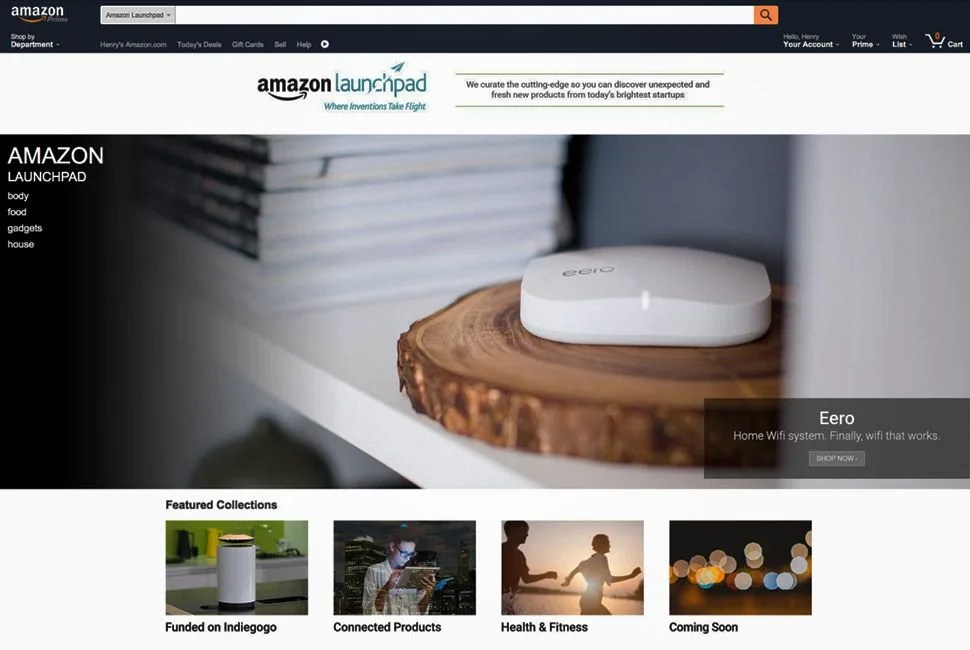Amazon is an odd duck. For years, pundits have suggested that it’s not really interested in turning a profit, seemingly baffled by its stock price rising despite banking next to nothing compared to its revenue. Of late, the company’s grand plan has become a little clearer, and its newest initiative — Launchpad — provides a glimpse into its ambitions for future growth.
It’d be easy to suggest that Launchpad is simply a rival to the likes of Indiegogo and Kickstarter, but that’d be a slight misrepresentation. Unlike those two entities, Amazon’s Launchpad doesn’t give startups a way to raise money. Instead, Launchpad is designed to slot in between the stages of fundraising and distribution — a stage that’s rarely dwelled upon by budding entrepreneurs, but ends up being critical in a business’s success or failure.
In fact, Launchpad is actually partnering with Indiegogo, along with Andreessen Horowitz, Y Combinator and a host of other venture capital firms and startup accelerators. Amazon’s goal isn’t to replace those entities — it’s to serve as a startup’s first and primary distribution mechanism once the proverbial sausage is made.
As it stands, getting a product funded is tough, but creating an e-commerce arm to actually ship, manage supply chain inventory, and market to a wide audience is another beast entirely. This is why so many Kickstarter and Indiegogo projects are funded but eventually falter. In 2012, just eight of the top 50 most-funded Kickstarter projects shipped on time, and data from late last year showed that “only one in five venture-backed products delivered on time, and it was not entirely uncommon for products to deliver three or more months late.”
It’s easy to craft an idea, and in today’s tech landscape, it’s relatively easy to find cash. Delivering is the hard part, and that’s why Launchpad exists.
Amazon’s global market reach is rivaled by only a precious few companies, and if you’re a hardware startup, getting listed on Amazon’s site is a very good thing indeed. If your project goes through one of Amazon’s 25 certified partners, and you actually produce a tangible product, Launchpad will enable you to have a “direct retail relationship with Amazon, enroll your products in the Amazon Vine program to get them reviewed, and merchandise them across Amazon.com.” Customers know and trust products coming from an Amazon warehouse. They’re able to utilize their Prime benefits to get items quickly. They respect Amazon’s world-class return policy. Suddenly, a startup’s wares are given tremendously more clout simply by being underneath the Amazon banner, despite the fact that Amazon had nothing to do with ideation or fundraising. And, perhaps more amazingly, this isn’t an exclusive arrangement; items that come to Launchpad can still be sold in retail stores such as Walmart.
Let’s look at Petzi Treat Cam, the first product to be distributed via Launchpad. The product was crowd funded on Indiegogo, and is now on sale via Amazon as well as in PetSmart stores. Once funded, the company’s owners had to fork out cash to produce actual goods to ship to Amazon, which will in turn offer them up for review and put them on sale through its channels. (Mind you, there’s no fee to participate in Launchpad.)
